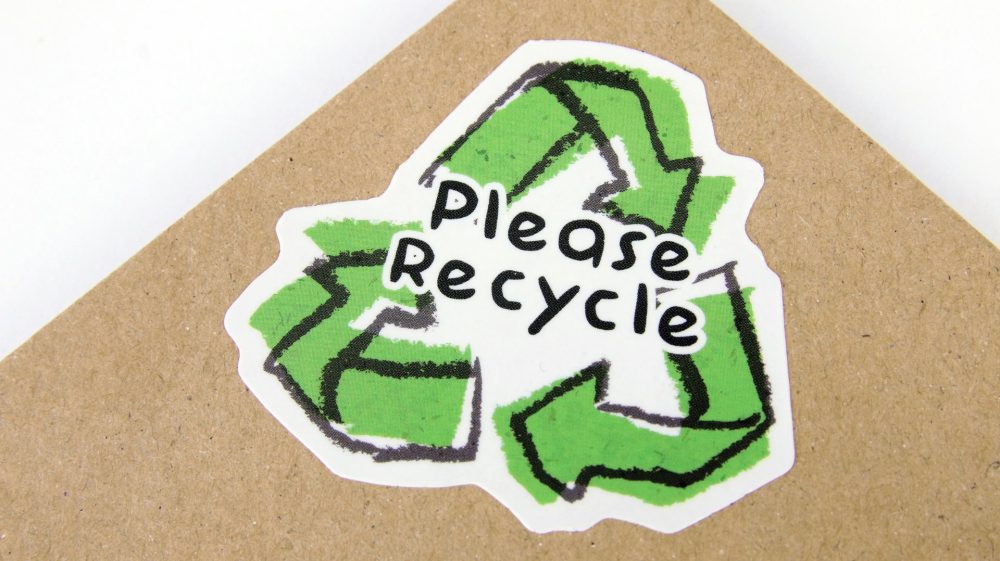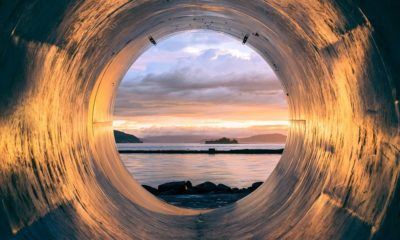Impact Investing
Beyond AI: Why Water Is a Long-Term Strategic Investment
Despite the spotlight on artificial intelligence, water is emerging as a vital long-term strategic investment. From Italy’s flood prevention projects to Switzerland’s stormwater defenses, Germany’s semiconductor hub supply, France’s PFAS purification, and England’s €126 billion infrastructure plan, Europe is channeling billions into water resilience, underscoring its essential role in future sustainability and growth.

The water sector, while less visible than other sectors like artificial intelligence, actually represents a strategic and sustainable long-term investment, so much so that it is gradually attracting millions of dollars in investments from Italy to the United Kingdom, via France, Germany, and Switzerland. Dieter Kuffer, Portfolio Manager of the Robeco Sustainable Water strategy, says this in an analysis. He explains why water represents a key strategic asset: not only does it meet essential and universal needs, but it is also becoming the cornerstone of a global infrastructure transformation
Despite the hype and euphoria surrounding AI, investments in the water sector may seem calm and low-key. However, while markets are caught up in the potential of AI, the long-term growth opportunities in infrastructure are going unnoticed.
There are some overlooked reports from various regions of the world, highlighting the strong momentum in spending on water-related projects. Financing flows are significant, involving multi-decade, multi-billion euro investments earmarked for solutions along the entire water value chain.
Italy: Investments in flood prevention and wastewater management
Heavy rainfall and flooding are becoming a chronic problem in several regions of Italy. The city of Bologna and the province of Ravenna in Emilia-Romagna are the latest areas to suffer severe damage from flooding caused by heavy rainfall. In response to a series of storms, the last of which hit Emilia-Romagna in September 2024, regional authorities are investing €1.2 billion in over 100 projects to repair collapsed water networks and build stormwater management infrastructure to prevent future floods and damage.
The projects include the construction of retaining walls and new embankments, the expansion of catchment basins and canals, and the installation of flood gates to intercept material carried by rivers.
In other regions, heatwaves and drought are exacerbating another of Italy’s chronic problems: water scarcity. To alleviate supply difficulties, the Italian government has allocated €600 million to modernize sanitation systems, with the aim of encouraging the use of greater amounts of wastewater for industrial purposes.
The municipality of Calvisano in the province of Brescia illustrates how these funds are being used at the municipal level. The town recently inaugurated an €81 million wastewater treatment plant to purify and reuse water for agricultural irrigation and industrial production. In addition to the construction of new treatment plants, another €321 million will be invested over the next five years to upgrade the distribution network and install smart metering systems to reduce losses.
Switzerland: Preparing for extreme weather events
Zurich, Switzerland’s most populous city, is investing €186 million to divert stormwater from the Sihl River, which flows through the city center, into Lake Zurich, located on its eastern shore. The project, which involves the construction of a 2-kilometer tunnel, is aimed at minimizing the risk of flash flooding and the resulting damage, the economic cost of which could exceed €7 billion.
Zurich cantonal authorities deemed this investment necessary despite the relatively low risk of a flood of this magnitude (estimated at once every 500 years). However, IPCC scientists warn that climate change is profoundly altering weather systems, making previously rare events more frequent and intense.
Germany: Water meets AI
The eastern German city of Dresden is investing €630 million to secure the water supply of Europe’s largest semiconductor hub until 2038. Demand in the Silicon Saxony region is expected to double (and possibly triple) in the coming decades, due to increasing consumption by major chip manufacturers.
The investments will be used to collect, purify, and channel surface water from the nearby Elbe River for industrial use. The project also includes intensive wastewater treatment, ensuring that the majority (80-90%) of the water withdrawn can be safely returned to the Elbe River. The works include an 11-kilometer spillway, new aeration basins, a blowing station for biological waste treatment, as well as new digesters and clarifiers for sludge management.
France: at the forefront of the fight against PFAS
The Île-de-France region, in north-central France, is stepping up its fight against micropollutants. SEDIF (Syndicat des Eaux d’Île-de-France), the leading water utility in the Paris region, has invested €1 billion in advanced purification systems that remove micropollutants such as PFAS from drinking water. The new technology, based on a combination of nanofiltration and low-pressure reverse osmosis, will be able to capture particles 100,000 times smaller than the diameter of a human hair.
PFAS levels have become a globally controversial issue, as decades of research have demonstrated their toxicity to humans and the environment. In Paris, the issue has become particularly alarming after unusually high concentrations of these substances were detected in tap water.
The new purification technology will be installed at two treatment plants in the departments of Val-de-Marne and Seine-Saint-Denis, along with the modernization of a third plant in the municipality of Méry-sur-Oise, both serving Paris and the surrounding areas. All facilities are expected to be fully operational by 2032.
England and Wales: Solving water problems with investment flows
England’s water problems have prompted Ofwat, the national regulator, to authorize record levels of spending to improve water infrastructure. Asset Management Plan 8 (AMP8), published in December 2024, allows utilities to invest a total of €126 billion (£104 billion) in projects over the next five years. This amount is 76% higher than the amount allowed under the previous AMP7, which covers the period 2020–2025.
Due to a chronic lack of investment in infrastructure and maintenance, England finds itself with a system that wastes up to 1,000 billion liters of water (about a fifth of the treated water supply). Furthermore, the long heatwaves of the summers of 2022 and 2023 dried up half of England’s reservoirs, which reached exceptionally low levels, leaving London with only enough water reserves to cover its needs for three and a half weeks.
The plan calls for the construction of new reservoirs to store rainwater and runoff during wet periods, to alleviate water shortages during dry periods, something that hasn’t happened in thirty years.
__
(Featured image by Ruthson Zimmerman via Unsplash)
DISCLAIMER: This article was written by a third party contributor and does not reflect the opinion of Born2Invest, its management, staff or its associates. Please review our disclaimer for more information.
This article may include forward-looking statements. These forward-looking statements generally are identified by the words “believe,” “project,” “estimate,” “become,” “plan,” “will,” and similar expressions. These forward-looking statements involve known and unknown risks as well as uncertainties, including those discussed in the following cautionary statements and elsewhere in this article and on this site. Although the Company may believe that its expectations are based on reasonable assumptions, the actual results that the Company may achieve may differ materially from any forward-looking statements, which reflect the opinions of the management of the Company only as of the date hereof. Additionally, please make sure to read these important disclosures.
First published in ESG NEWS. A third-party contributor translated and adapted the article from the original. In case of discrepancy, the original will prevail.
Although we made reasonable efforts to provide accurate translations, some parts may be incorrect. Born2Invest assumes no responsibility for errors, omissions or ambiguities in the translations provided on this website. Any person or entity relying on translated content does so at their own risk. Born2Invest is not responsible for losses caused by such reliance on the accuracy or reliability of translated information. If you wish to report an error or inaccuracy in the translation, we encourage you to contact us.

-

 Crowdfunding2 weeks ago
Crowdfunding2 weeks agoDeep Learning Italia Launches €400K Crowdfunding to Bridge Italy’s Tech Skills Gap
-

 Impact Investing5 days ago
Impact Investing5 days agoCOP30: Fragmented Climate Politics, Multi-Speed Transition, and Emerging Investment Opportunities
-

 Markets2 weeks ago
Markets2 weeks agoRice Market Rebounds from Oversold Lows Amid Weak Demand
-

 Crypto5 days ago
Crypto5 days agoEthereum in 2025: Volatility, Maturity, and Strategic Renewal

















